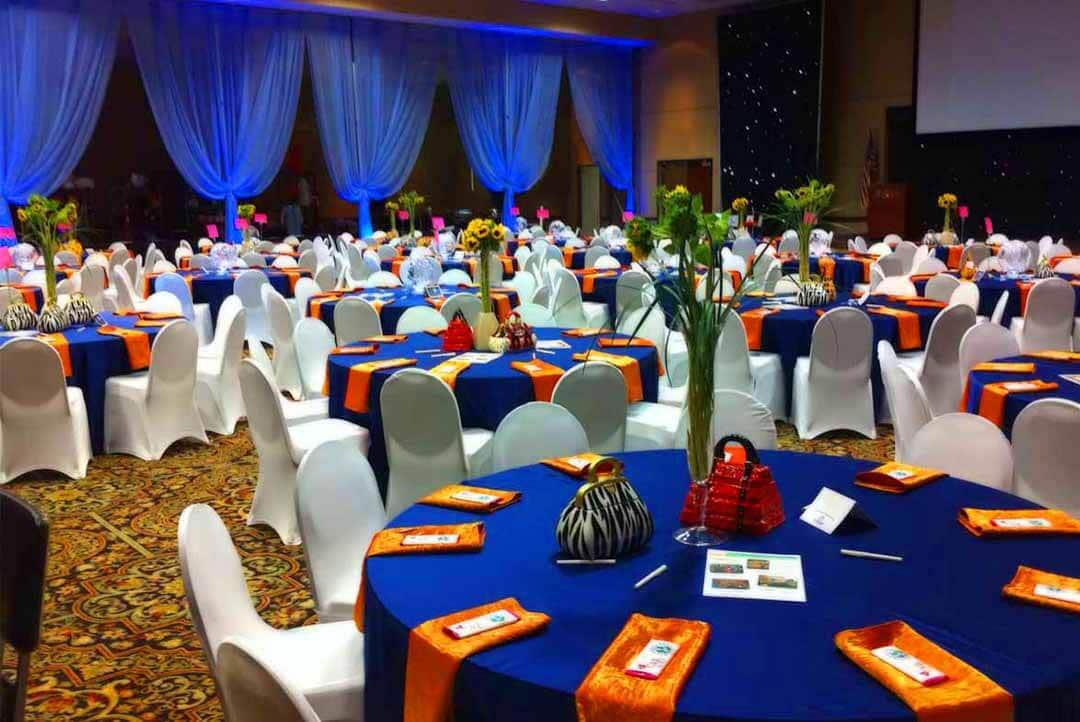6 Steps for Organizing a Highly Effective Corporate Event

In the world of business, corporate success is built on good relationships. No matter whether we are talking about relationships with partners, associates, and suppliers or the bonds we are trying to build with our customers, the strength of these connections is what can determine the fate of one company when other market factors drop the ball.
With that in mind, it is far easier to understand why corporate events are considered such an effective and popular branding tool. Other marketing channels may allow us to reach a larger number of people and soften them up, but when it comes to building lasting relationships, nothing can replace the face-to-face personal experience.
Let us take a look then at a couple of tips that should help you to plan these events so you are able to use their full potential and make a lasting impression on the audience.
Set goals and build the event around them
Essentially, you can’t expect your event will make a considerable impact if you don’t really have an idea of what you want to achieve. So, try to find a set of goals that will, in some capacity, push your company forward and try to build the entire event around these necessities. We suggest that you use the SMART type of objectives to see this task through. These objectives are:
- Specific – What is the specific outcome you want to get
- Measurable – How are you going to measure the achievements of these goals
- Achievable – Objectives need to be possible to accomplish
- Relevant – Objectives need to relate to your company’s goals
- Timebound – Accomplishment of goals needs to be time-limited
Set up the flexible event budget
The focus here is on the word flexible. Just like any other business venture, your next corporate event needs to have a budget that will clearly outline the budget items, staffing costs, available resources, etc. However, these types of events are known for their unanticipated expenditures so you need to have some level of built-in flexibility. So, it is highly recommended that, instead of exact prices that can be subjected to change you use the higher estimates. Also, having a smaller contingency fund will help you easily handle last-minute entertainment changes and similar expenses without undermining the budget.
Decide the size of the event
Not all business events don’t have to look like massive corporate expos. On the contrary, you have a whole niche of micro-events with no more than 100 people that are conducted in the form of meetings and dinners. So, for instance, if you are throwing a meeting for your partners in Australia, a cozy Italian restaurant in Western Sydney will do just fine. Use larger venues according to the following suggestions:
- 150 -200 visitors – seminars and training days, use the facilities with basic audio-visual options
- up to 1,000 delegates – company-wide conferences that usually rely on more technology
- up to 10,000 delegates – multi-day events that need to take into account accommodation, logistics, etc.
Take care of the marketing
Unless you are throwing a micro-sized event for a closed circle of a selected audience, you need to make sure that your audience draws in a selected, targeted audience. In this case, paid ads coordinated with a fun and engaging social media action should serve this basic purpose. But, if you want to truly nail down the experience you should create a dedicated website that will familiarize the audience with the event program and help them get the basic gist of the whole thing. Ideally, the website should feature some level of interactivity with the games and promos that will naturally connect with the even activities.
Plan out the attendee engagement
Every event features different types of demographic. Spending some time researching this targeted pool of people through limited market research can help you create a program that will actively engage the audience and help it retain the presented information. Furthermore, event content should be made interactive and feature some form of breakouts. The two most popular options you have on disposal are:
- Breakout sessions – This form of highlighting is often used in sales conferences and allows the audience to develop a deeper understanding of some specific topic.
- Breakout groups – This format entails dividing the audience into smaller groups and allowing them to brainstorm or analyze some issue.
Create a follow-up program
Last but not least, we would like to remind you that corporate events make only the first step in the process of audience engagement, so they should never be designed as self-sufficient. At the end of each event, you should present the audience with some form of promotional material they can take home, point them out to the next points of interaction, or, at least, give them some provocative thoughts they can ponder on the way home. In any of the cases, you should always plan one step ahead. Ideally, though, your company should have an established interaction funnel before you even start planning.
We hope these few tips will help you to use your next corporate event to stick the homerun and offer your audience something of true value. The most important thing is to remember that business expos and all other events are not only opportunities for broad promotion. They are very deliberate and potent marketing tools. The more deliberately you use them you will get the better results.